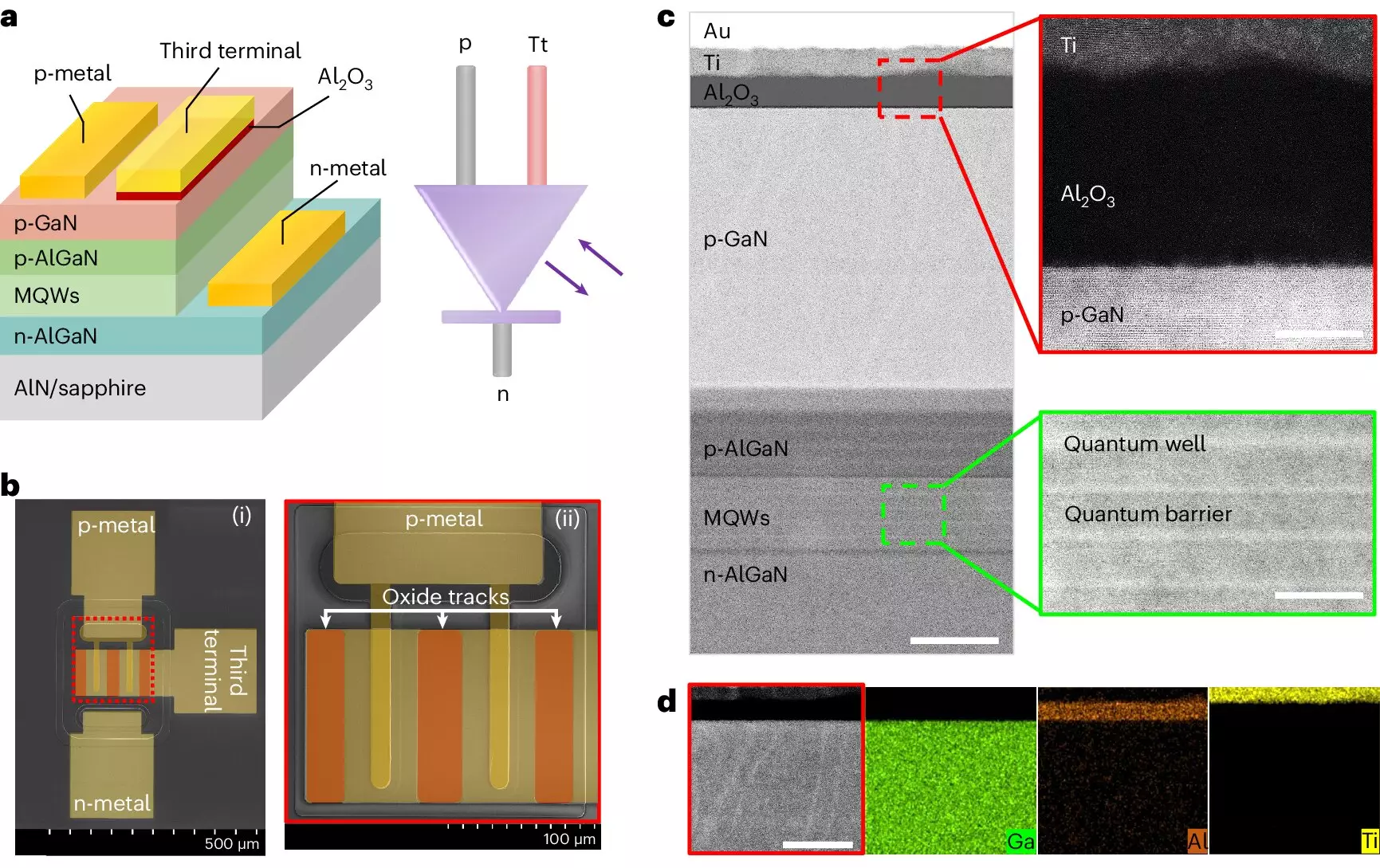In the realm of electronic components, two-terminal devices have long been the standard for connecting to electrical circuits. However, these components have their limitations, which can hinder the performance and functionality of a system. Recognizing this issue, researchers at the University of Science and Technology of China (USTC) have developed a groundbreaking three-terminal diode that not only emits light but also detects it. This innovative diode, as described in a recent publication in Nature Electronics, has the potential to revolutionize wireless communication and light-driven computing systems.
The three-terminal diode developed by Prof. Haiding Sun and his team at the iGAN Laboratory combines a traditional gallium nitride-based p–n diode with a newly introduced third terminal. This third terminal, which consists of a metal/Al2O3 dielectric layer applied directly to the p–GaN layer, enhances the functionality of the device significantly. By adjusting the bias applied to the third terminal, the diode can modulate light intensity, thereby increasing the modulation bandwidth when operating as a light emitter. Additionally, the device can utilize both voltage and incident light inputs to establish reconfigurable NAND and NOR optoelectronic logic gates when functioning as a photodetector.
The new three-terminal diode shows great promise for optical wireless communication (OWC) systems. Initial tests have indicated that this diode can enhance modulation bandwidth by over 64%, a substantial improvement over current OWC systems that use traditional light-emitting p–n diodes. Moreover, the ability to seamlessly switch between emitter and detector modes makes this device incredibly versatile, offering faster, more efficient, and reliable data transmission methods. The researchers believe that this innovative approach could not only benefit gallium nitride (GaN) materials but could also be adapted to other semiconductor platforms, paving the way for multifunctional and integrated electronic and optoelectronic systems.
Looking to the future, Prof. Haiding Sun and his colleagues are committed to further enhancing the performance of their three-terminal diode. They plan to explore integration with other optoelectronic materials and systems to unlock even greater potential. By refining the capabilities of their diode, the research team aims to fabricate OWC technology that can transmit data at higher speeds and develop cutting-edge optically driven computing systems. This ongoing research holds promise for pushing the boundaries of optoelectronic devices and bringing us one step closer to a future of advanced technology and innovation.
The development of the three-terminal diode marks a significant milestone in the field of optoelectronics. By combining the functionality of a light emitter and a photodetector into a single device, the researchers at USTC have opened up a world of possibilities for enhanced wireless communication and computing systems. With further research and experimentation, the potential applications of this innovative diode are limitless, offering a glimpse into a future where technology transcends its current capabilities.


Leave a Reply